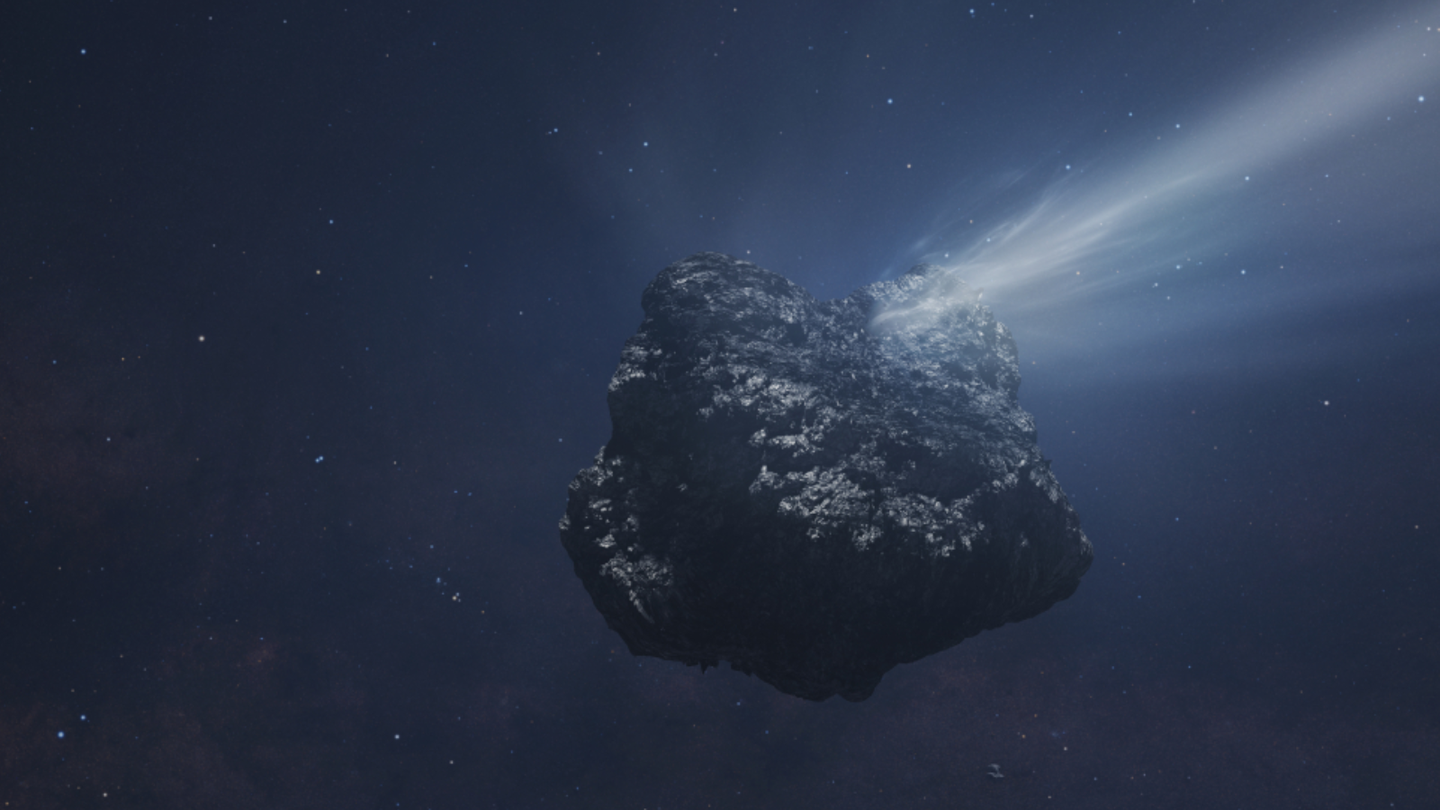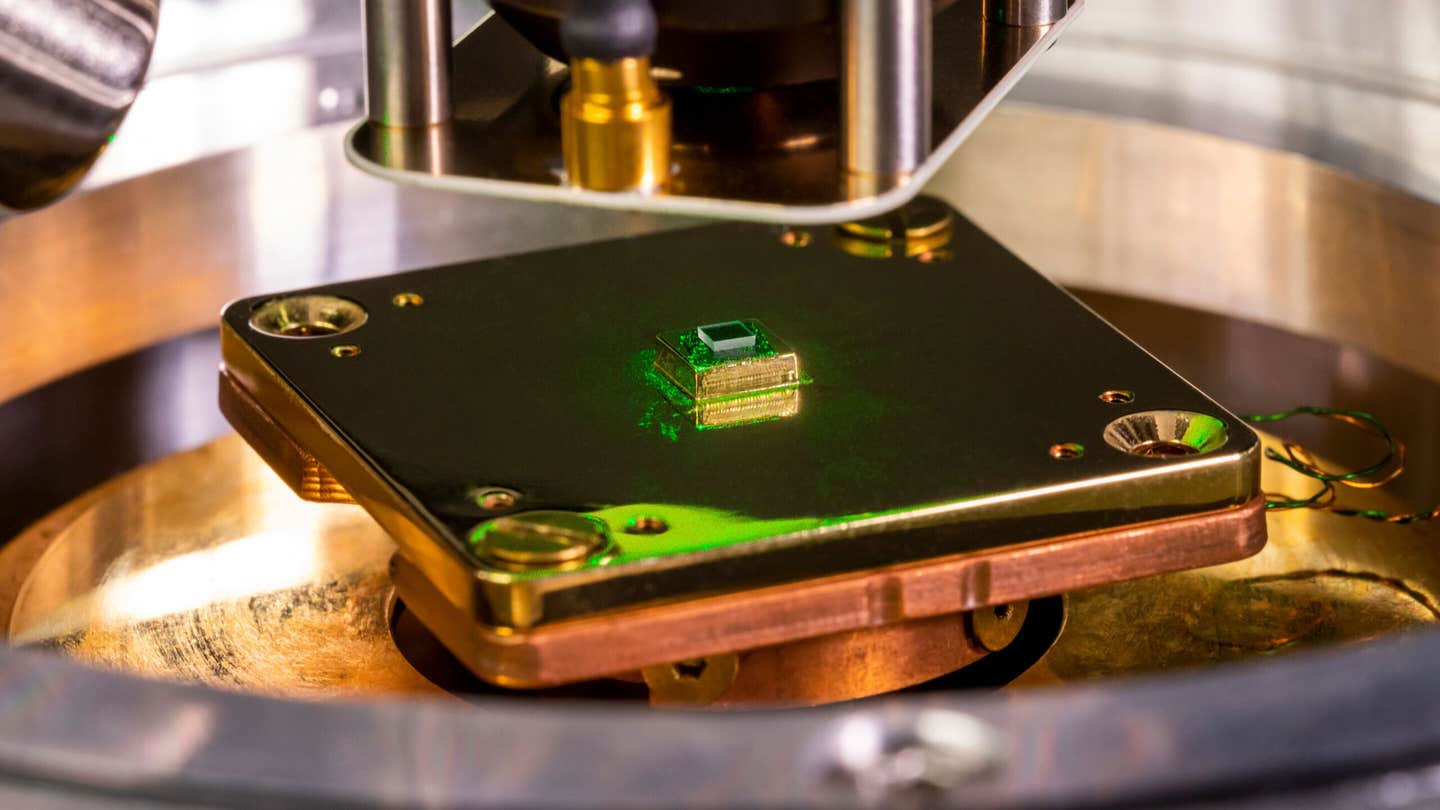Scientists discover mysterious object that may be the oldest comet ever detected
Astronomers unveil 3I/ATLAS, an ancient comet older than our solar system, providing unprecedented insights into cosmic history.

Astronomers discover 3I/ATLAS, the oldest comet ever seen, predating our solar system by billions of years. (CREDIT: (NSF / AUI / NSF NRAO / M.Weiss)
Astronomers have just discovered what might be the oldest comet ever seen by humanity—an ancient visitor that predates our solar system by billions of years.
This interstellar object, named 3I/ATLAS, was first spotted on July 1, 2025, by the ATLAS survey telescope in Chile. Astronomers now believe it could be more than seven billion years old, far older than our own solar system's 4.5 billion years.
An Unprecedented Cosmic Visitor
Matthew Hopkins, an astronomer from the University of Oxford, presented these groundbreaking findings at the Royal Astronomical Society’s National Astronomy Meeting 2025 in Durham. "All non-interstellar comets, like Halley’s comet, formed alongside our solar system and are about 4.5 billion years old," Hopkins explained. "But interstellar visitors can be much older. Our statistical method suggests that 3I/ATLAS is very likely the oldest comet we've ever observed."
3I/ATLAS isn't just old—it's unusual. Unlike previous interstellar objects, its steep path through the galaxy suggests it comes from the Milky Way’s thick disk. This region, filled with ancient stars, hovers above and below the galaxy's main disk, where our Sun resides.
Professor Chris Lintott, co-author of the study and presenter of the BBC’s "The Sky at Night," highlighted the comet’s uniqueness. "This is an object from a part of the galaxy we've never seen up close before," he said. "We think there's a two-thirds chance this comet is older than the solar system, drifting through interstellar space ever since."
Why Age Matters
What makes 3I/ATLAS especially intriguing is its chemical composition. Astronomers believe that this comet is rich in water ice, hinting at its formation around an old, thick-disk star. As it moves closer to the Sun, its surface heats up, causing ice to vaporize—a process called sublimation. This releases gas and dust, creating a glowing coma and a bright tail, the familiar signature of comets.
Related Stories
Early observations already confirm cometary activity, suggesting 3I/ATLAS might be larger than the previous two interstellar visitors: 1I/'Oumuamua in 2017 and 2I/Borisov in 2019. Dr. Michele Bannister, from the University of Canterbury in New Zealand, described the excitement: "3I is already showing signs of activity. Observing the gases released as it heats up will test our model. Some of the world's biggest telescopes are already watching closely."
Testing Ground for New Models
This discovery wasn't merely a stroke of luck; it was a perfect opportunity to test a new predictive model called the Ōtautahi–Oxford Model. Developed during Hopkins’ doctoral research, this model uses cometary orbits and stellar origins to predict properties of interstellar objects.
The timing was uncanny. Just a week before spotting 3I/ATLAS, Hopkins had defended his doctoral thesis. Instead of enjoying a planned vacation, he immediately began comparing real-time data with his predictions. "Rather than the quiet Wednesday I'd planned, I woke up to messages like '3I!'" Hopkins recounted. "It’s fantastic to test our model on something brand new and potentially ancient."
What Does This Mean for Astronomy?
Astronomers are now eagerly anticipating observations from the new Vera C. Rubin Observatory. Set to conduct the Legacy Survey of Space and Time over the next decade, Rubin was already expected to discover between 5 and 50 interstellar visitors. The discovery of 3I/ATLAS suggests these numbers could be even higher.
"The solar system science community was already excited about potential discoveries Rubin will make," said Dr. Rosemary Dorsey from the University of Helsinki. "Finding 3I/ATLAS right before Rubin's operations begin makes the upcoming observations even more promising. We might discover around 50 interstellar objects, some similar in size to 3I/ATLAS."
For amateur astronomers keen to see this cosmic spectacle, 3I/ATLAS will be visible through moderately sized telescopes in late 2025 and early 2026. Its close approach and brightness promise spectacular views and valuable scientific insights.
The discovery of 3I/ATLAS is more than just finding another comet. It represents a rare chance to peer into our galaxy's distant past, revealing secrets about star and planet formation billions of years ago.
This ancient visitor, originating from a previously unseen region, challenges our understanding of cosmic history, reminding us that the universe continues to surprise and amaze.
More Famous Comets and Their Ages
Halley's Comet (1P/Halley)
Halley's Comet (1P/Halley) is perhaps the most famous comet and has been observed for millennia, with the earliest known observation attributed to Chinese astronomers in 239 BC. While ancient civilizations recorded its appearances, it was Edmond Halley who, in 1705, deduced that the comets observed in 1531, 1607, and 1682 were in fact the same object, and correctly predicted its return in 1758.
Halley's Comet is a short-period comet with an average orbital period of 76 years. Its age is estimated to be at least 16,000 years in its current orbit, though it has shown no signs of significant aging. It was last seen in 1986 and is expected to return in 2061.
Encke's Comet (2P/Encke)
Encke's Comet (2P/Encke) holds the distinction of being the first periodic comet discovered after Halley's. It was first observed by Pierre Méchain on January 17, 1786. However, it wasn't until 1819 that Johann Franz Encke, through meticulous calculations, recognized that various comet sightings from 1786, 1795, 1805, and 1818 were all appearances of the same comet.
Its remarkably short orbital period of approximately 3.3 years makes it one of the most frequently returning comets. Due to its frequent returns and the gravitational perturbations it experiences, its exact "age" in terms of past orbits is harder to pinpoint, but its consistent appearance suggests it has been in its current orbit for a significant astronomical timescale. Encke's Comet had its last perihelion in October 2023 and is predicted to return around February 9, 2027.
Biela's Comet (3D/Biela)
Biela's Comet (3D/Biela) was first observed by Jacques Leibax Montaigne in 1772, and independently rediscovered by Jean-Louis Pons in 1805. It was Wilhelm von Biela who, in 1826, recognized it as a periodic comet with an orbital period of about 6.75 years. This comet is notable for its dramatic disintegration; it was observed to split into two pieces in 1846, and both fragments were seen again in 1852.
After 1852, the comet was never seen again as a coherent object, though its remnants continue to produce the Andromedid meteor shower. Therefore, while its initial discovery was in 1772, its "return" in its original form is no longer possible, as it is considered destroyed.
Faye's Comet (4P/Faye)
Faye's Comet (4P/Faye) was discovered by Hervé Faye at the Royal Observatory in Paris on November 23, 1843. Although it was a faint object and had already passed perihelion about a month before its discovery, a close pass by Earth made it bright enough to be seen.
Its orbital period was soon calculated to be approximately 7.4 years, making it another short-period comet. Since its discovery, Faye's Comet has been observed at nearly every return, with its "age" measured in the countless orbits it has completed. Its last perihelion was in September 2021, and its next predicted return is in March 2029.
Brorsen's Comet (5D/Brorsen)
Brorsen's Comet (5D/Brorsen) was discovered by Danish astronomer Theodor Brorsen on February 26, 1846. It has an orbital period of about 5.46 years, which meant its apparitions alternated between favorable and unfavorable viewing conditions. Despite being observed for several returns after its discovery, with the last definite sighting in 1879, Brorsen's Comet is now considered a lost comet.
While calculations can predict potential future perihelion passages, like one estimated for November 28, 2028, it has not been recovered due to factors such as fading, disintegration, or gravitational perturbations that altered its orbit beyond easy detection.
d'Arrest's Comet (6P/d'Arrest)
d'Arrest's Comet (6P/d'Arrest) was discovered by Heinrich Louis d'Arrest in Leipzig, Germany, on June 28, 1851. This comet has an orbital period of approximately 6.5 years. Pre-discovery observations (called "prerecoveries") have pushed back its known history to as early as September 11, 1678, making it a comet with a long documented observational arc.
D'Arrest's Comet has been a consistent returner, providing a wealth of data for astronomers to study its composition and evolution. Its most recent perihelion passage was in September 2021, and its next predicted return is in March 2028.
Note: The article above provided above by The Brighter Side of News.
Like these kind of feel good stories? Get The Brighter Side of News' newsletter.



